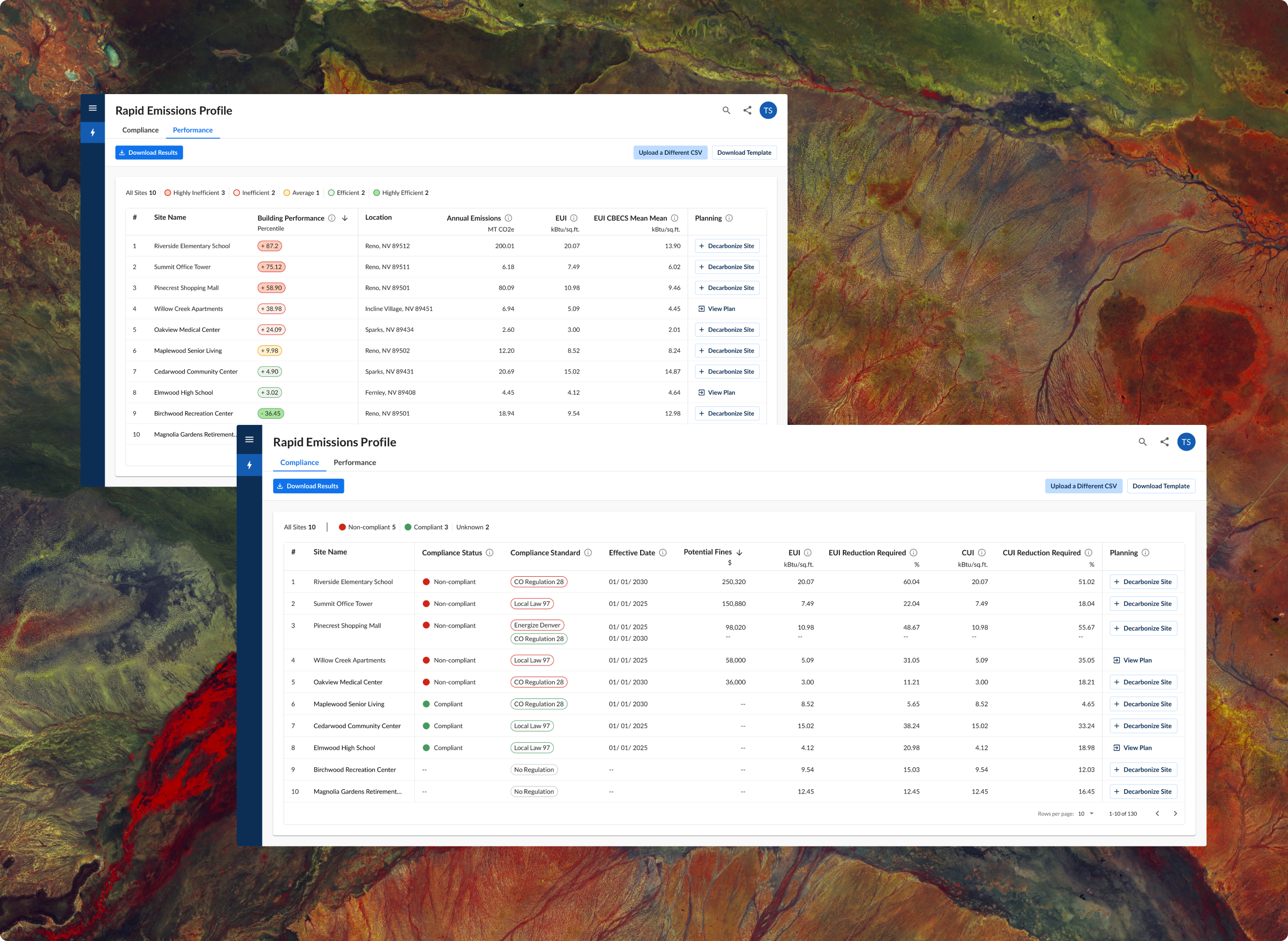We at NZero have developed the world’s most advanced and sophisticated data collection and machine learning tools to assist decarbonization planning. For many organizations and their teams, however, that stage can feel beyond where they find themselves currently.
Climate change is a collective action problem, and we believe technology should not only empower the experts and early movers in net zero planning, but those just starting out to participate. That’s why we’re introducing a new tool – the Rapid Emissions Profile, or REP – to make decarbonization accessible and actionable for all.
REP leverages the innovations of advanced machine learning and AI – technologies at the heart of the NZero platform – to perform an instant Emissions Profile of an asset. With REP, we created a lightweight, user-friendly tool focused on three barriers we’ve seen firsthand stifle progress: difficult to collect asset data, a complex and distributed regulation landscape, and asset and resource prioritization.
What would normally take months is now calculated in minutes, offering users regardless of their starting point a sightline into their current emissions and, importantly, a compliance status against active regulations in order to assess financial exposure and prepare. With REP, we can change the conversation from the difficulty of data capture and slow movement to one where more institutions feel aware and enabled to act on their carbon footprint and risk.
The Power of an Emissions Profile
The concept of an Emissions Profile provides the necessary and required context for energy usage and GHG emissions, to best characterize, calculate and compare a path toward energy, emissions and cost reduction. Critical contextual factors include at least the following:
- Detailed building profile, like appropriate operating modes, occupancy, equipment and energy sources.
- Temperature and environmental factors, like how space conditioning accounts for 40% of building energy use.
- Utility rates and tariffs, like peak demand and time-of-use charges.
- Dynamic emissions intensity, like the impact of renewable and grid sources through hourly emissions factors.
- Tailored opportunity assessment, like forecasting reduction opportunities based on location and usage.
In REP we managed to aggregate all of this complex context and simplify it into an intuitive interface, designed to help practitioners and companies understand their portfolio and have the confidence to take continuing steps towards decarbonization.





